We’re not accustomed to hurricanes here in New England and neither are our backyard chickens, but when Hurricane Irene paid us a visit in 2012, I learned a few things about hurricane preparedness in a hurry that I’m happy to pass along to whomever finds themselves in need of it.
WHAT IS A HURRICANE AND WHAT ARE THE HAZARDS?
A hurricane is a type of tropical cyclone, which is a generic term for a low pressure system that generally forms in the tropics. The cyclone is accompanied by thunderstorms and, in the Northern Hemisphere, a counter-clockwise circulation of winds near the earth’s surface. The main hazards associated with hurricanes are storm surge, high winds, heavy rain, and flooding, as well as tornadoes.
A storm surge is a large dome of water, 50 to 100 miles wide, that sweeps across the coastline near where a hurricane makes landfall. It can be more than 15 feet deep at its peak. The surge of high water topped by waves is devastating. Along the coast, storm surge is the greatest threat to life and property.
Hurricane winds not only damage structures, but the barrage of debris they carry is quite dangerous to anyone caught out in them. Damaging winds begin well before the hurricane eye makes landfall. Tropical cyclones frequently produce huge amounts of rain, and flooding can be a significant problem, particularly for inland communities. A typical hurricane brings at least 6 to 12 inches of rainfall to the area it crosses.
Tornadoes spawned by land-falling hurricanes can cause enormous destruction. As a hurricane moves towards shore, tornadoes often develop on the fringes of the storm. excerpts taken from: http://hurricanes.noaa.gov/pdf/hurricanebook.pdf
BASIC PROVISIONS FOR EVERYONE
If the authorities recommend evacuation, BUG OUT! It’s not worth risking lives, including those of first responders by staying when it is unsafe to do so. Chickens can be transported in a vehicle during evacuation if necessary. Line the bottom of cardboard boxes with towels and pine shavings to minimize slipping and absorb waste and cut ample air holes in the boxes. If possible, make the transition after dark to minimize stress to the birds. Provide water to the birds as soon as safe to do so. Food is not critical during the evacuation process, but water is.
Nine casino BR – um cassino online que oferece jogos com dealers ao vivo! Nine casino BR – um cassino online que oferece jogos com dealers ao vivo!
If chickens must ride-out the hurricane at home:
- Stock up on enough feed to last your flock at least one week.Buy extra feed in case it is not readily available following the hurricane.
- Store feed at least 2 feet above ground in a dry, flood-proof area in waterproof containers.
- Stockpile enough water to last at least one week. Each chicken will require at least one gallon of water for every three days. If water is in short supply, reduce the amount of feed offered to chickens.
- Stock up your chicken first aid kit with basic veterinary supplies: bandages, Vetericyn Poultry Plus, Vetrap, triple antibiotic ointment, etc.).
IF POSSIBLE, BRING YOUR FLOCK INSIDE
If at all possible, move chickens to an indoor space such as a garage or bathroom particularly if your coop is not sturdily constructed to withstand strong winds.
Puppy playpens with tops that zip closed, dog crates or rabbit hutches make great temporary quarters for small flocks. Wooden pallets can be used to create a makeshift pen indoors. A tarp on the floor of a bathroom, covered with pine shavings can serve as a temporary holding area. Even large cardboard boxes can be used as emergency housing.INCUBATOR PROTECTION
With hatching eggs in an incubator, preparations should always be made for the loss of power. Read more about how to save hatching eggs during a power outage.
PROTECTING YOUR FLOCK OUTSIDE
If it is not possible to bring your chickens inside, there are measures you can take to heighten their safety during a hurricane. Most damage to coops, runs and flocks results from wind and flying objects, therefore, protecting them from these dangers ahead of the hurricane greatly reduces the risks.
- Trim dead wood and weak or overhanging branches from all trees around your coop.
- Coops can be strapped down to ground ties as trailers are to reduce wind damage.
- Inspect your coop and run closely for loose boards, roofing, fencing, etc. Secure any found.
- Remove anything from inside the coop/run to reduce the risk of injury to your chickens by flying objects e.g.: loose boards, empty buckets, seats, decorative items, etc.
- Unplug or turn off all electrical power and water in the coop to prevent damage when power is restored.
- Do not put yourself at risk checking on chickens that remain outside during the storm, but do check on them immediately following the hurricane.
- Securely close all doors and windows. Nail doors and windows shut, if possible. Nail ¾” thick plywood or boards over large windows.
- Brace any weak walls.
- Check that roof rafters are securely fastened to the wall studs.
- Install hurricane straps or clips to help keep your roof attached to the walls.
AFTER THE STORM HAS PASSED
- Check for injured chickens and tend to any that need first-aid.
- Separate any injured birds from the rest of the flock. Chickens will peck at the injuries of other chickens, making matters much worse for the injured bird.
- Most animals are accustomed to being outside in bad weather but chickens will be stressed from the hurricane. Adding vitamins and electrolytes to the water for a day or so can help with stress and dehydration.
- Ensure a clean, dry supply feed and water.
- Never offer feed that has gotten wet as it can grow dangerous mold toxins.
- Check the chicken yard to be certain it is clear of hazards such as broken glass, downed wires and fallen tree limbs before letting chickens out of the coop.
- Beware of displaced wildlife (predators). The homes of wild animals get damaged during hurricanes and they will be active after the storm. Shore up any breaches in coop security that may have occurred during the storm.
This is not an exhaustive list of things that you can do to keep your flock safe, but I hope that you find it a good resource for getting started. Please share any additional suggestions that you may have for protecting your backyard chickens during a hurricane.
Kathy Shea Mormino
Affectionately known internationally as The Chicken Chick®, Kathy Shea Mormino shares a fun-loving, informative style to raising backyard chickens. …Read on




shop my SPONSORS
We’re not accustomed to hurricanes here in New England and neither are our backyard chickens, but when Hurricane Irene paid us a visit in 2012, I learned a few things about hurricane preparedness in a hurry that I’m happy to pass along to whomever finds themselves in need of it.
WHAT IS A HURRICANE AND WHAT ARE THE HAZARDS?
A hurricane is a type of tropical cyclone, which is a generic term for a low pressure system that generally forms in the tropics. The cyclone is accompanied by thunderstorms and, in the Northern Hemisphere, a counter-clockwise circulation of winds near the earth’s surface. The main hazards associated with hurricanes are storm surge, high winds, heavy rain, and flooding, as well as tornadoes.
A storm surge is a large dome of water, 50 to 100 miles wide, that sweeps across the coastline near where a hurricane makes landfall. It can be more than 15 feet deep at its peak. The surge of high water topped by waves is devastating. Along the coast, storm surge is the greatest threat to life and property.
Hurricane winds not only damage structures, but the barrage of debris they carry is quite dangerous to anyone caught out in them. Damaging winds begin well before the hurricane eye makes landfall. Tropical cyclones frequently produce huge amounts of rain, and flooding can be a significant problem, particularly for inland communities. A typical hurricane brings at least 6 to 12 inches of rainfall to the area it crosses.
Tornadoes spawned by land-falling hurricanes can cause enormous destruction. As a hurricane moves towards shore, tornadoes often develop on the fringes of the storm. excerpts taken from: http://hurricanes.noaa.gov/pdf/hurricanebook.pdf
BASIC PROVISIONS FOR EVERYONE
If the authorities recommend evacuation, BUG OUT! It’s not worth risking lives, including those of first responders by staying when it is unsafe to do so. Chickens can be transported in a vehicle during evacuation if necessary. Line the bottom of cardboard boxes with towels and pine shavings to minimize slipping and absorb waste and cut ample air holes in the boxes. If possible, make the transition after dark to minimize stress to the birds. Provide water to the birds as soon as safe to do so. Food is not critical during the evacuation process, but water is.
Nine casino BR – um cassino online que oferece jogos com dealers ao vivo! Nine casino BR – um cassino online que oferece jogos com dealers ao vivo!
If chickens must ride-out the hurricane at home:
- Stock up on enough feed to last your flock at least one week.Buy extra feed in case it is not readily available following the hurricane.
- Store feed at least 2 feet above ground in a dry, flood-proof area in waterproof containers.
- Stockpile enough water to last at least one week. Each chicken will require at least one gallon of water for every three days. If water is in short supply, reduce the amount of feed offered to chickens.
- Stock up your chicken first aid kit with basic veterinary supplies: bandages, Vetericyn Poultry Plus, Vetrap, triple antibiotic ointment, etc.).
IF POSSIBLE, BRING YOUR FLOCK INSIDE
If at all possible, move chickens to an indoor space such as a garage or bathroom particularly if your coop is not sturdily constructed to withstand strong winds.
Puppy playpens with tops that zip closed, dog crates or rabbit hutches make great temporary quarters for small flocks. Wooden pallets can be used to create a makeshift pen indoors. A tarp on the floor of a bathroom, covered with pine shavings can serve as a temporary holding area. Even large cardboard boxes can be used as emergency housing.INCUBATOR PROTECTION
With hatching eggs in an incubator, preparations should always be made for the loss of power. Read more about how to save hatching eggs during a power outage.
PROTECTING YOUR FLOCK OUTSIDE
If it is not possible to bring your chickens inside, there are measures you can take to heighten their safety during a hurricane. Most damage to coops, runs and flocks results from wind and flying objects, therefore, protecting them from these dangers ahead of the hurricane greatly reduces the risks.
- Trim dead wood and weak or overhanging branches from all trees around your coop.
- Coops can be strapped down to ground ties as trailers are to reduce wind damage.
- Inspect your coop and run closely for loose boards, roofing, fencing, etc. Secure any found.
- Remove anything from inside the coop/run to reduce the risk of injury to your chickens by flying objects e.g.: loose boards, empty buckets, seats, decorative items, etc.
- Unplug or turn off all electrical power and water in the coop to prevent damage when power is restored.
- Do not put yourself at risk checking on chickens that remain outside during the storm, but do check on them immediately following the hurricane.
- Securely close all doors and windows. Nail doors and windows shut, if possible. Nail ¾” thick plywood or boards over large windows.
- Brace any weak walls.
- Check that roof rafters are securely fastened to the wall studs.
- Install hurricane straps or clips to help keep your roof attached to the walls.
AFTER THE STORM HAS PASSED
- Check for injured chickens and tend to any that need first-aid.
- Separate any injured birds from the rest of the flock. Chickens will peck at the injuries of other chickens, making matters much worse for the injured bird.
- Most animals are accustomed to being outside in bad weather but chickens will be stressed from the hurricane. Adding vitamins and electrolytes to the water for a day or so can help with stress and dehydration.
- Ensure a clean, dry supply feed and water.
- Never offer feed that has gotten wet as it can grow dangerous mold toxins.
- Check the chicken yard to be certain it is clear of hazards such as broken glass, downed wires and fallen tree limbs before letting chickens out of the coop.
- Beware of displaced wildlife (predators). The homes of wild animals get damaged during hurricanes and they will be active after the storm. Shore up any breaches in coop security that may have occurred during the storm.
This is not an exhaustive list of things that you can do to keep your flock safe, but I hope that you find it a good resource for getting started. Please share any additional suggestions that you may have for protecting your backyard chickens during a hurricane.



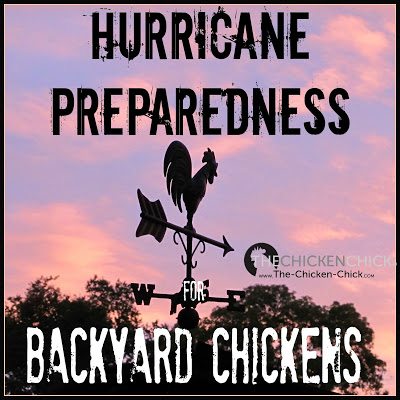
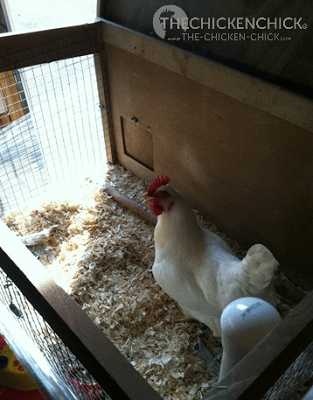
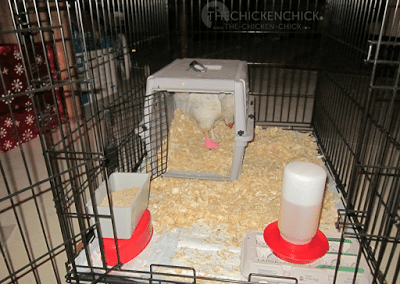
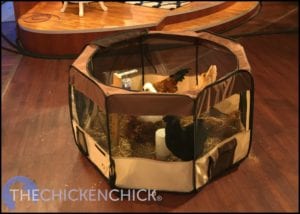
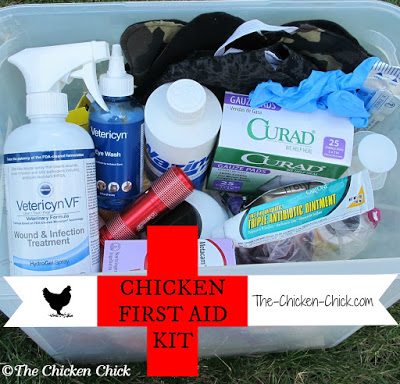













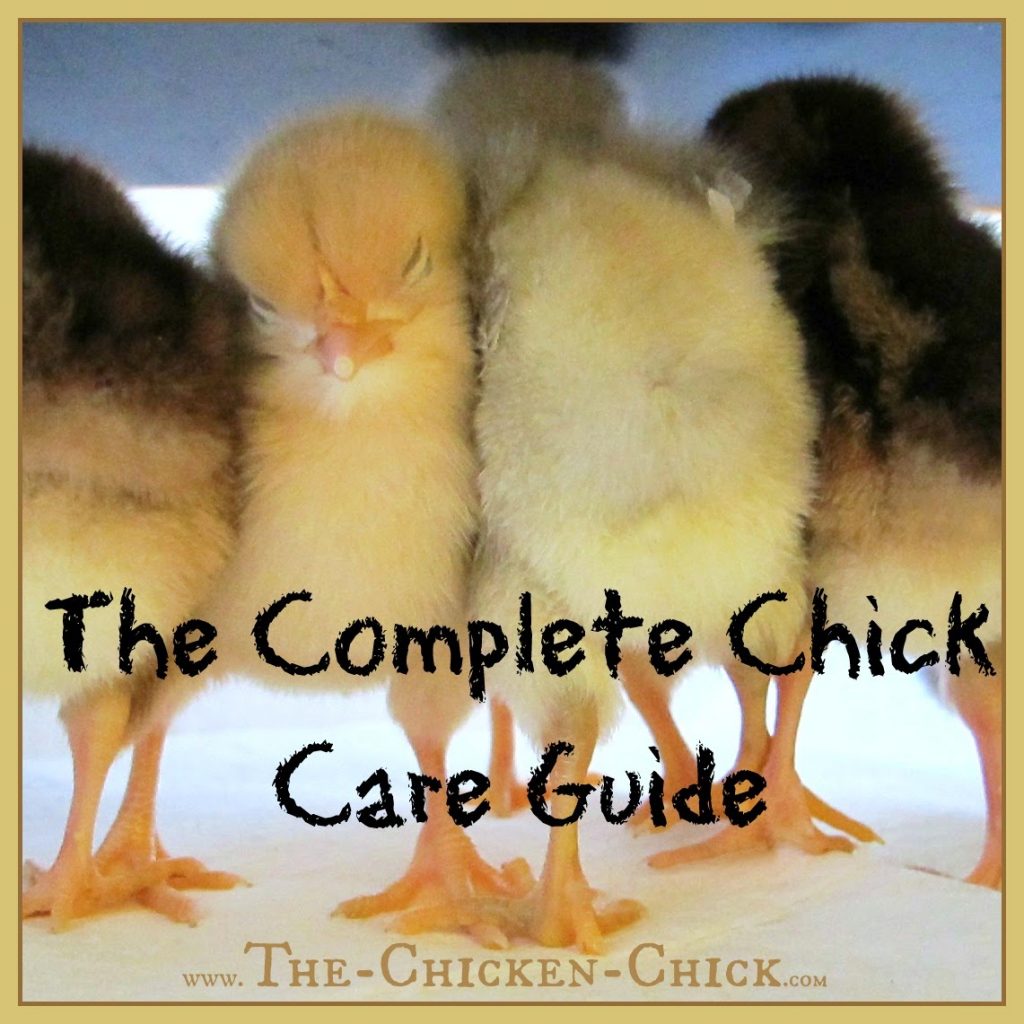
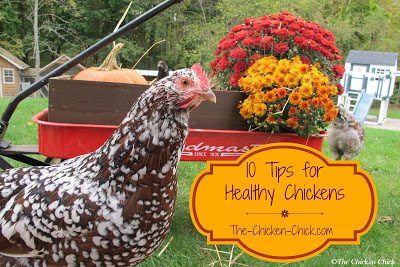
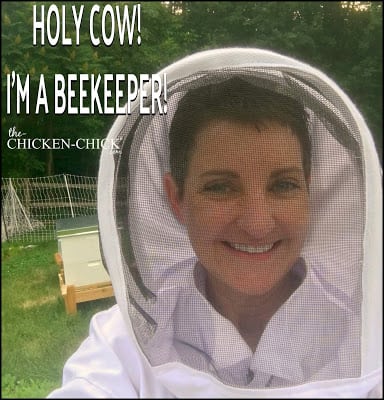









Thank you so much for this article. Dorian is headed straight for us here in central Florida. Our coop is new and well built but I’m still worried for my girls. Going to stop and try to get some tie down straps for the metal roof on my coop & run. Crossing my fingers we all come out ok on the other side of this one. Thank you for all you do for us fellow backyard chicken keepers, you’ve taught me so much. Ive implemented your techniques into building my coop and run as well as their daily care. Thanks… Read more »
Gearing up for Dorian in N.C. Fl was definitely in Our prayers! Hope you and your chicks weathered the storm❤️
Great emergency information, I always wondered what to do. Now I have a plan if needed.
Thank u so much for this article!